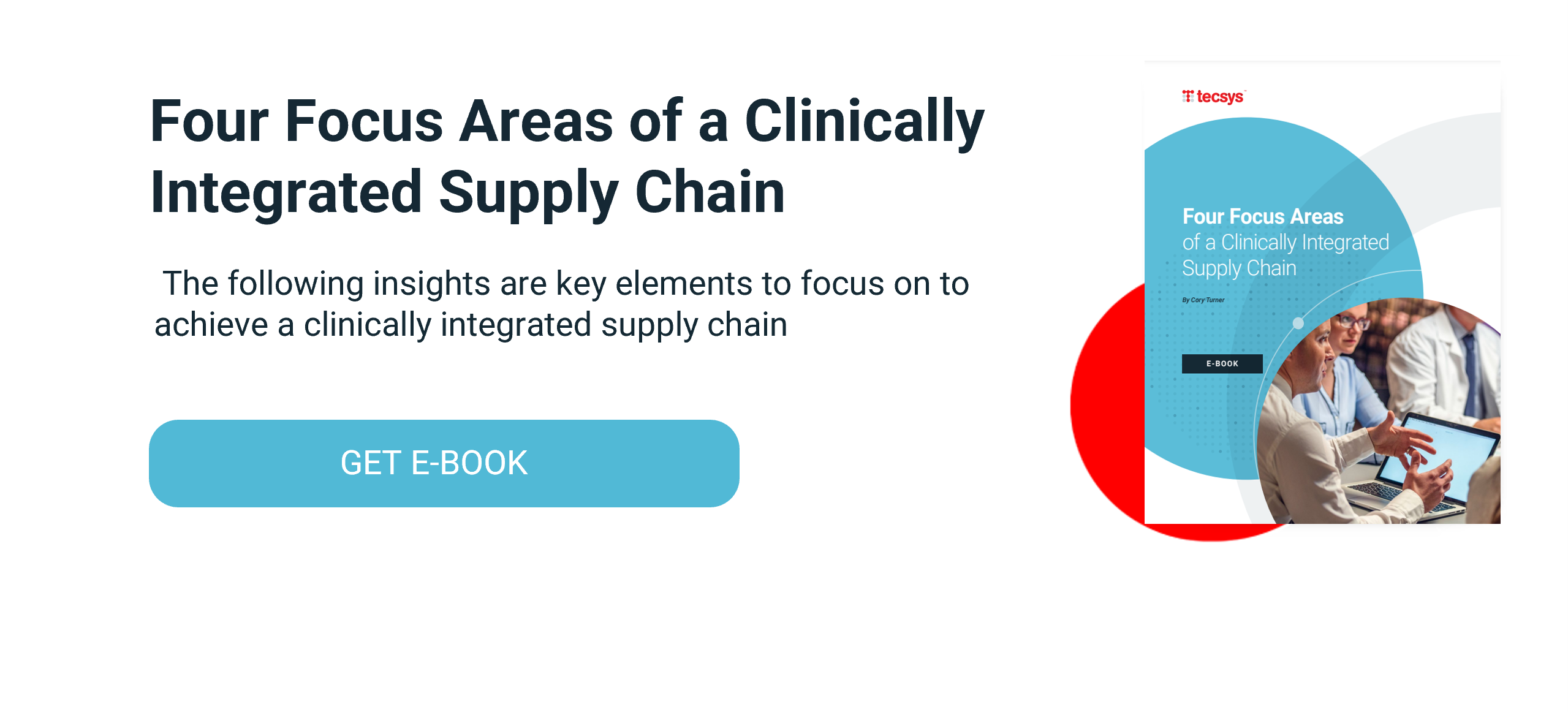Are You Missing Analytics in Your Healthcare Supply Chain?

Healthcare CEOs and CFOs are increasingly looking to their supply chain leaders for analytics on clinical, operational and financial performance. While most hospital supply chains generate a wealth of data, a lack of system integration means it is locked up in different places.
In April 2022, Deloitte released findings from an industry survey of 400 nurses, physicians, service-line leaders and supply chain administrators on healthcare supply chain resiliency. More than two-thirds of respondents said they have experienced data-related challenges, such as data availability, data quality and data integration.
To overcome these challenges and unlock the power of healthcare supply chain analytics, hospitals are implementing supply chain management (SCM) systems that are fully integrated with their enterprise resource planning (ERP), electronic health record (EHR) and financial systems. Accurate and timely data on supply purchases, storage, movement, consumption and waste is better stored in one place where supply chain leaders can apply advanced healthcare analytics for actionable insights.
Here are four areas where you can transform your hospital’s performance levels by leveraging healthcare supply chain analytics.
1. Supply Optimization
The Deloitte survey also revealed how supply chain data quality issues result in inaccurate supply counts, with depleted inventory in some locations while others are well-stocked. End-to-end visibility to all supply types in all locations is critical to managing inventory levels and ensuring items are available when needed.
With accurate, complete and timely data in one place, and the ability to apply healthcare supply chain analytics, supply chain leaders can easily monitor performance on an ongoing basis, manage inventory to reduce costs, and, ultimately, provide value for clinicians and patients.
They can make informed decisions about inventory levels, order movement, handling inefficiencies, gain a better understanding of inventory reduction by stock types and identify where the hospital should spend efforts to optimize on-hand inventory and balance replenishment. They can also manage expired and lost products to identify supply waste and make improvements.
2. Demand and Forecasting
COVID-19 pandemic supply chain disruptions have generated greater interest in demand planning among healthcare leaders. In a fall 2020 survey of 39 large U.S. health providers, 95% of respondents said they want to increase demand planning, but more than half don’t have a system for it.
In the past, supply chain leaders used historical data to gauge supply demand and perform forecasting, whereas today, there is a pressing desire to leverage real-time data for a proactive approach to supply procurement and management.
Fully automated, real-time inventory tracking, including product receipt, storage, movement and consumption, enables supply chain leaders to quickly and accurately identify demand signals and act on them. They can even communicate this information out to suppliers to help strengthen supply chain resiliency upstream.
3. Case Costing
Determining the true cost of a procedure, including supply costs, is the first step in controlling them. Case costing dashboards help hospitals analyze trends in service lines and procedures such as consumption, cost and waste to identify savings opportunities at the procedure, physician and item level.
When supply consumption tracking in procedural areas is automated through the SCM system, supply chain and clinical leaders can obtain a true understanding of product usage, perform comparative effectiveness and uncover opportunities to lower costs without reducing quality of care. With the help of healthcare supply chain analytics, they can optimize supply utilization, drive standardization and make strategic decisions about dropping an underperforming product line and/or refocusing capital resources into more productive areas.
4. Financial Strength
A recent Gartner report cites how healthcare CEOs are increasingly relying on chief supply chain officers (CSCO) “to solve problems in the healthcare supply chain so that the IDN can focus on providing quality patient care at sustainable costs.” With total healthcare supply chain cost to serve averaging 37.3% of the total cost of patient care, there is plenty of opportunity for financial improvement.
A supply chain leader can leverage analytics to proactively monitor their hospital’s supply chain on an ongoing basis and manage inventory to reduce costs and recover clinical time. They can track financial gains, manage effectiveness and identify savings opportunities.
Access to actionable information can be the difference between an impulsive decision and a strategic one. By sharing documented improvements with the CEO and CFO, supply chain leaders can use healthcare supply chain analytics to demonstrate the impact of their efforts on the hospital’s bottom line.




